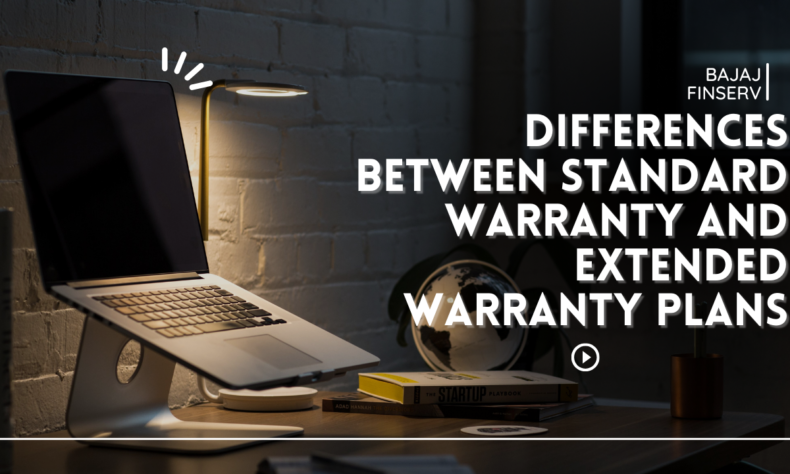
In today’s fast-paced world, technology has become an integral part of our daily lives. From smartphones to laptops, we rely on electronic devices for communication, work, entertainment, and more. With this increasing dependence on technology, the need for warranties and protection plans has also grown. Two common types of warranties that consumers encounter are standard warranties and extended warranty plans. In this article, we will explore the differences between these two types of warranties, shedding light on their coverage, costs, and benefits. Additionally, we will delve into examples like Acer warranty check and Apple extended warranty to provide real-world context.
Standard Warranty: Basics and Coverage
A standard warranty, often referred to as a manufacturer’s warranty or limited warranty, is a basic coverage plan that typically comes with a newly purchased product. These warranties are provided by the manufacturer and are designed to cover defects in materials and workmanship for a specific period. The coverage duration varies from one product to another but typically ranges from 90 days to one year.
Coverage under a standard warranty generally includes repairs and replacement of faulty parts due to manufacturing defects. For instance, if you purchase a new laptop and it experiences hardware malfunctions within the warranty period, the manufacturer will repair or replace the defective components free of charge. However, standard warranties do not cover damages resulting from accidents, misuse, or wear and tear.
Acer Warranty Check: An Example of a Standard Warranty
Let’s consider the example of an Acer laptop and how the Acer warranty check plays into the standard warranty.
When you purchase an Acer laptop, it typically comes with a standard one-year warranty. During this period, if your laptop encounters issues like a malfunctioning keyboard or a faulty hard drive that can be attributed to manufacturing defects, Acer will provide repair services at no additional cost. However, if you accidentally spill liquid on the laptop or drop it, causing physical damage, the standard warranty will not cover the repair or replacement costs.
Extended Warranty Plans: An Overview
While standard warranties offer a basic level of coverage, many consumers opt for extended warranty plans to provide additional protection and peace of mind for their valuable electronic devices. Extended warranties, also known as service contracts or protection plans, are typically offered by the manufacturer, third-party providers, or retailers. These plans extend the coverage beyond the standard warranty period, often for an additional cost.
Extended warranties vary in terms of coverage and duration, and consumers can choose the plan that best suits their needs. The key advantages of extended warranty plans include:
Extended Coverage: Extended warranties prolong the coverage period, sometimes up to several years beyond the standard warranty. This means that if a covered issue arises after the standard warranty expires, you’re still protected.
Comprehensive Protection: Unlike standard warranties, extended warranty plans often cover a broader range of issues, including accidental damage, power surges, and even theft or loss, depending on the plan.
Convenience: Extended warranty plans often come with additional perks like expedited repair services, technical support, and in some cases, device replacement in case of irreparable damage.
Apple Extended Warranty: A Notable Example
One of the most renowned examples of an extended warranty plan is the AppleCare+ extended warranty offered by Apple for its products like iPhones, iPads, and MacBooks. Let’s take a closer look at Apple extended warranty and how it differs from a standard warranty.
Apple’s Standard Warranty: Apple provides a one-year limited warranty for its products. This standard warranty covers manufacturing defects and hardware malfunctions. For instance, if your iPhone’s screen suddenly stops responding or your MacBook’s keyboard becomes unresponsive within the first year of purchase, Apple will repair or replace the device at no additional cost.
AppleCare+ Extended Warranty: Apple offers an extended warranty plan called AppleCare+. This plan extends the coverage for an additional two years (for most products) beyond the standard one-year warranty. AppleCare+ includes coverage for accidental damage, such as a cracked screen or water damage, subject to a deductible fee. It also provides priority access to technical support and express replacement services, making the repair process faster and more convenient for customers.
Differences Between Standard and Extended Warranties
Now that we have a clear understanding of standard and extended warranties, let’s delve deeper into the differences between these two types of coverage plans:
Coverage Duration: Standard warranties have a relatively short coverage duration, typically ranging from 90 days to one year. In contrast, extended warranties can extend the coverage period for several additional years, depending on the plan.
Coverage Scope: Standard warranties primarily cover manufacturing defects and hardware malfunctions. They do not cover accidental damage or issues arising from misuse or accidents. Extended warranties, on the other hand, often offer more comprehensive coverage, including accidental damage, power surges, and sometimes even theft or loss protection.
Cost: Standard warranties are usually included with the purchase of a product at no additional cost. Extended warranties come at an extra cost, which varies depending on the product, the provider, and the duration of coverage. Consumers must weigh the cost of the extended warranty against the potential repair or replacement expenses to determine if it’s a worthwhile investment.
Provider: Standard warranties are typically provided by the manufacturer and are automatically included with the purchase. Extended warranties can be offered by the manufacturer, third-party providers, or retailers, giving consumers more options to choose from.
Additional Perks: Extended warranty plans often come with additional benefits, such as faster repair services, technical support, and in some cases, device replacement. These perks can enhance the overall ownership experience and provide added value for customers.
Transferability: Some extended warranties are transferable to a new owner if you sell or gift the product, adding resale value to your device. Standard warranties are usually non-transferable and apply only to the original purchaser.
In summary, standard warranties and extended warranty plans serve different purposes in the world of consumer electronics. Standard warranties offer basic coverage for manufacturing defects and hardware malfunctions for a limited duration, typically at no extra cost. In contrast, extended warranty plans provide extended coverage, often including protection against accidental damage and additional perks for a fee.
The decision to purchase an extended warranty should be based on various factors, including the cost of the warranty, the value of the product, and your personal risk tolerance. It’s essential to carefully read and understand the terms and conditions of both standard and extended warranties before making a decision.
Whether you’re performing an Acer warranty check for your laptop or considering Apple’s extended warranty for your iPhone, understanding the differences between standard and extended warranties empowers you to make informed choices about protecting your valuable electronic devices. Ultimately, the choice between standard and extended warranties depends on your individual needs and preferences as a consumer.






